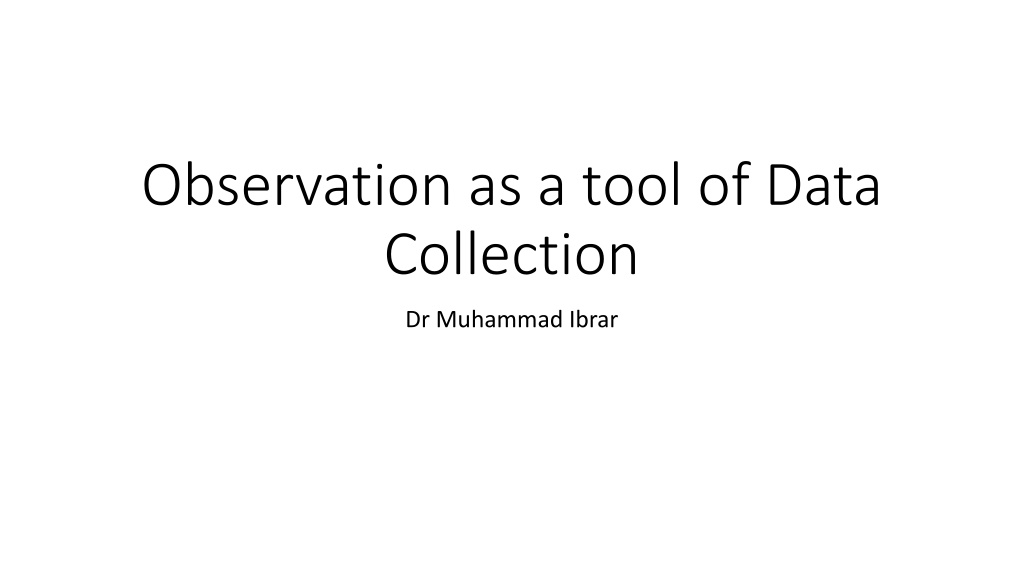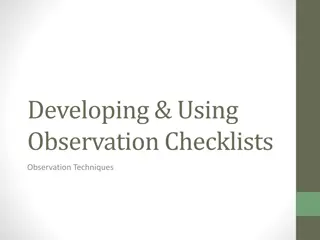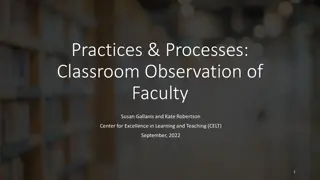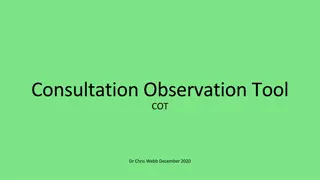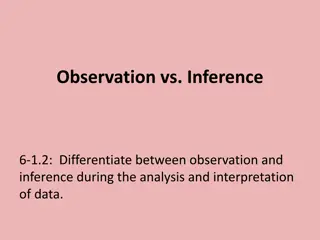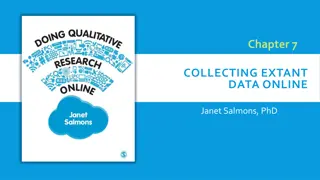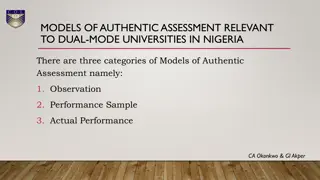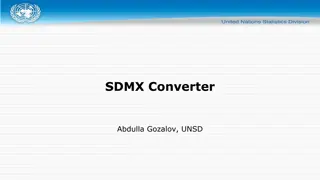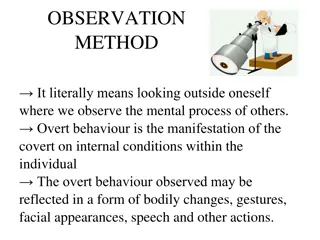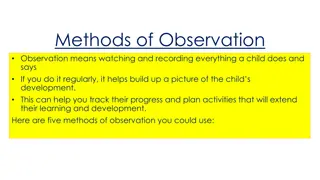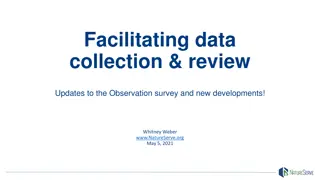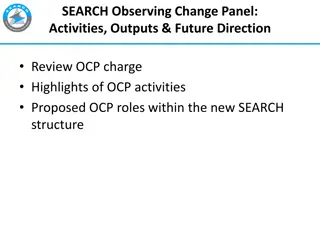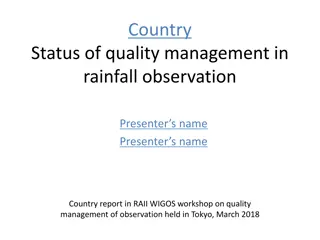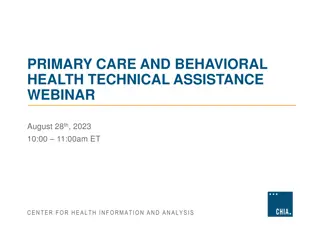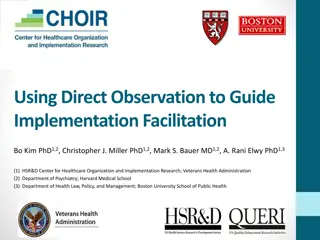Understanding Observation as a Data Collection Tool in Behavioral Science
Observation method serves as a crucial tool for data collection in behavioral science, enabling researchers to systematically record and analyze observable phenomena. This method involves recording behavior patterns without direct interaction, providing in-depth insights into natural settings and interactions among individuals. Various types of observation techniques exist, including participant and non-participant observation, structured and unstructured observation, controlled and uncontrolled observation. By following effective steps for observation, researchers can gather valuable data for analysis and interpretation.
Download Presentation

Please find below an Image/Link to download the presentation.
The content on the website is provided AS IS for your information and personal use only. It may not be sold, licensed, or shared on other websites without obtaining consent from the author. Download presentation by click this link. If you encounter any issues during the download, it is possible that the publisher has removed the file from their server.
E N D
Presentation Transcript
Observation as a tool of Data Collection Dr Muhammad Ibrar
Introduction The observation method is most commonly used method in behavioral science. Observation becomes a scientific tool and the method of data collection for the researcher, when it serves a formulated research purpose, is systematically planned and recorded and is subjected to checks and controls on validity and reliability. It is also a process of recording the behavior patterns of people, objects, and occurrences without questioning or communicating with them.
Contd. Observation carefully. We all watch other people sometimes, but we don t usually watch them in order to discover particular information about their observation in social science. Observation method is a method under which data from the field is collected with the help of observation by the observer or by personally going to the field. involves looking and listening very behavior. This is what
Definitions Gorman and Clayton define observation studies as those that involve the systematic recording of observable phenomena or behavior in a natural setting. MARSHALL and ROSSMAN (1989) define observation as "the systematic description of events, behaviors, and objects in the social setting chosen for study. (ERLANDSON, HARRIS, SKIPPER, & ALLEN, 1993) Observations enable the researcher to describe existing situations using the five senses, providing a "written photograph" of the situation under study.
Why to observe ? Observation allows the researcher to study people in their 'natural setting' without their behavior being influenced by the presence of a researcher. Observational data usually consists of detailed information about particular groups or situations. This kind of data can 'fill out' and provide a deeper, richer, understanding than survey work which tends to produce less detailed information about a larger number of people. Some methods only allow for the study of one individual at a time. Observation enables the research to study groups of people together, that is, it allows for the study of interaction between the members of a group.
Steps For An Effective Observation Determine what needs to be observed Select participants Random/Selected Conduct the observation (venue, duration, recording materials, take photographs) Compile data collected Analyze and interpret data collected
Types of observation 1. Participant Observation. 2. Non-participant Observation. 3. Structured Observation. 4. Unstructured Observation. 5. Controlled Observation. 6.Uncontrolled Observation
Contd. Participant Observation: In this observation, the observer is a part of the phenomenon or group which observed and he acts as both an observer and a participant. Example, a study of tribal customs by an anthropologist by taking part in tribal activities like folk dance. The person who are observed should not be aware of the researcher s purpose. Then only their behaviour will be natural.
Contd. Non - Participant Observation: in this method, the observer stands apart and does not participate in the phenomenon observed. Naturally, there is no emotional involvement on the part of the observer. This method calls for skill in recording observations in an unnoticed manner. Example : use of recording devices to examine the details of how people talk and behave together.
Contd. Structured Observation: Concentrate on a particular aspect or aspects of the variable being observed, be it a thing, behavior, condition or situation. Unstructured Observation: The observer does not hold any list of items to be observed. Controlled Observation: When observation takes place according to pre arranged plans, with experimental procedure then it is controlled observation generally done in laboratory under controlled condition. Uncontrolled Observation: When the observation takes place in natural condition i.e., uncontrolled observation. It is done to get spontaneous picture of life and persons.
Advantages of Observation 1. The behavior of human being is exactly observed. 2. The people who cannot speak (Deaf & children) 3. The researcher can observe his subjects for as long as he needs the time and as many times as he can for greater accuracy and validity in description and interpretation. 4. Produces Large quantities of data. 5. The observation technique can be stopped or begun at any time. 6. Relative Inexpensive
Disadvantages of Observation 1. There is a smaller size of sample if the universe covers a very wide area and the researcher cannot afford to observe a substantial area. 2. Language barrier 3. Cultural barrier 4. Risks involved 5. Researchers are needed to wait for the incident or behavior 6. Difficult to analyze 7. May require training 8. In some cases, the use of observational methods may be unethical, as in observing people without their knowledge or consent.
